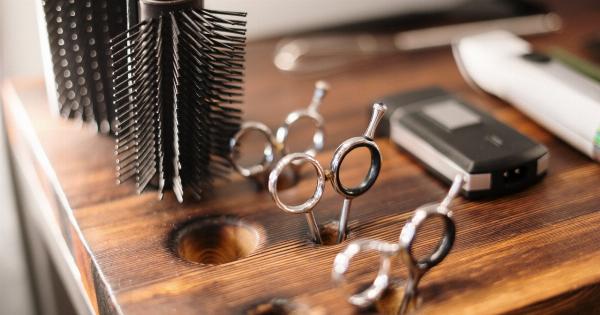Hair removal is a common practice among both men and women alike, with various methods available to achieve smooth and hair-free skin.
However, what many fail to realize is that the seemingly harmless act of removing unwanted hair can actually come with its fair share of risks and dangers. From minor irritations to severe damage, here are some of the potential hazards associated with hair removal procedures.
1. Razor Burns and Cuts
Shaving is perhaps the most popular and widely used method of hair removal. However, using a razor blade to eliminate hair comes with the risk of suffering from razor burns and cuts.
Improper technique, dry shaving, and using dull blades can lead to irritation, redness, and even painful cuts. These cuts can potentially become infected if not properly cleaned and managed.
2. Allergic Reactions
Many hair removal methods involve the use of chemicals, such as depilatory creams and waxing products. These chemicals can trigger allergic reactions in certain individuals, causing symptoms like redness, swelling, itching, and even blisters.
It’s essential to perform a patch test before using any new hair removal product to ensure that you’re not allergic to its ingredients.
3. Skin Irritation and Inflammation
Waxing and sugaring, which involve the removal of hair from the root, can lead to skin irritation and inflammation. Ripping off hair forcibly can traumatize the skin, causing it to become red, swollen, and tender.
People with sensitive skin are particularly prone to experiencing these adverse effects. Additionally, if the wax or sugar paste is too hot, it can potentially burn the skin.
4. Ingrown Hairs
Ingrown hairs are a common problem encountered after various hair removal methods, especially shaving and waxing. When new hair growth is obstructed and grows sideways or curls back into the skin, it leads to painful bumps and inflammation.
Improper shaving techniques, such as going against the hair growth direction, can increase the likelihood of ingrown hairs.
5. Folliculitis
Folliculitis is the inflammation of hair follicles, and it can be a potential consequence of hair removal techniques that involve the use of razors or waxing strips.
Bacteria can easily enter the follicles through open cuts or irritated skin, leading to infection and the formation of pustules. Folliculitis can be uncomfortable and unsightly, requiring medical intervention in severe cases.
6. Hyperpigmentation
Hyperpigmentation refers to the darkening or discoloration of the skin after hair removal. It is more commonly seen in individuals with darker skin tones.
The trauma caused to the skin during the hair removal process can stimulate the production of melanin, leading to patches of darkened skin. Hyperpigmentation can take weeks or months to fade and may require specialized treatment.
7. Chemical Burns
Depilatory creams often contain powerful chemicals that dissolve the hair shaft, allowing it to be easily wiped away. However, if left on the skin for too long or used incorrectly, these creams can cause chemical burns.
Chemical burns can range from mild irritation and redness to severe blistering and skin damage. Proper application and adherence to the product’s instructions are crucial in avoiding chemical burns.
8. Laser Hair Removal Risks
Laser hair removal is a popular long-term hair removal solution. While generally safe when performed by trained professionals, it still carries certain risks.
Improper use of lasers or using devices on unsuitable skin types can result in burns, scarring, and changes in skin pigmentation. It is vital to choose a reputable clinic with qualified practitioners to minimize these risks.
9. Damage to Mucous Membranes
Some individuals opt for hair removal methods in sensitive areas, such as the bikini line and the upper lip. These areas have delicate mucous membranes that can easily be damaged during hair removal procedures.
Waxing, threading, or using depilatory creams in these areas can cause irritation, inflammation, and even infections. Extreme caution is needed when removing hair from sensitive regions.
10. Psychological Impacts
While not physical dangers, it’s essential to acknowledge the potential psychological impacts of hair removal.
The societal pressure to conform to certain beauty standards can create feelings of insecurity and self-consciousness among individuals who struggle with excessive or unwanted hair growth. This can lead to low self-esteem, body image issues, and even psychological distress.
Conclusion
Hair removal may seem like a harmless cosmetic routine, but it comes with its fair share of risks and dangers. From skin irritations and burns to infections and scarring, various hazards can arise during the hair removal process.
Therefore, it is crucial to approach hair removal methods with caution, carefully following instructions and choosing the most suitable technique for your skin and hair type. Prioritizing safety and seeking professional advice when necessary can help minimize the potential dangers associated with hair removal.































